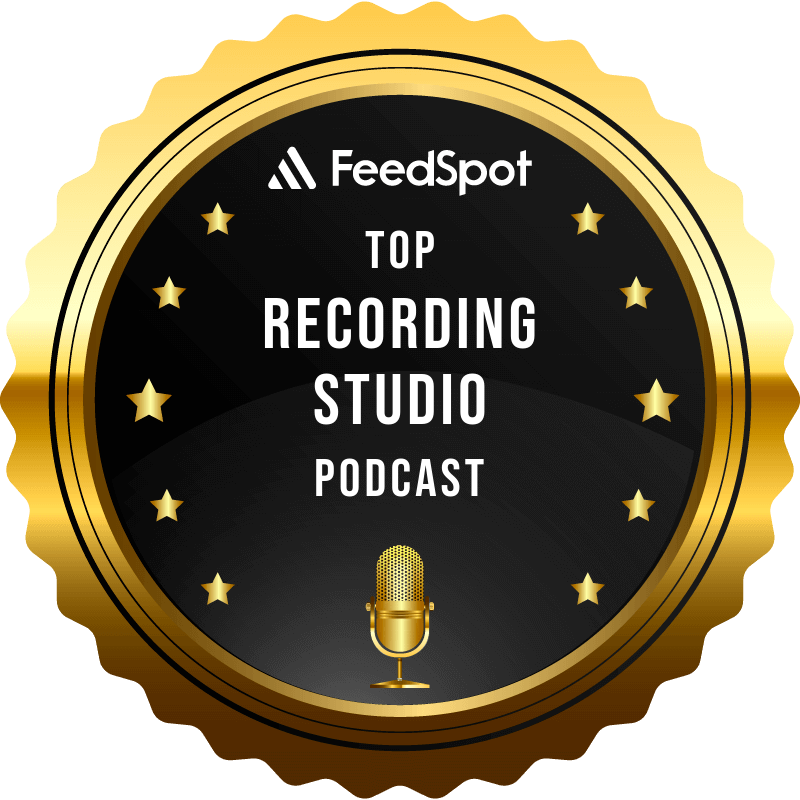Mike Greene Talks Bad TV, Realitone, and Bowie
If you’ve ever yelled at your DAW because a virtual instrument just wasn’t cutting it, there’s a good chance you’ve wished for someone like Mike Greene to swoop in and save your session. Songwriter, producer, and the brain behind Realitone, Mike has spent years building sample libraries that are as fun as they are functional. But before he became the VI wizard we know today, he was busy writing songs, producing records, and even sneaking his work into some (let’s be honest) questionable TV shows.
In this episode of Inside the Recording Studio, Chris and Jody sit down with Mike for a conversation that’s part gear talk, part career confessional, and part comedy show. If you thought virtual instruments were all dry tech talk, think again.
From Bad TV to Realitone Genius
Mike openly admits it: you’ve probably heard his music in TV shows you wouldn’t exactly brag about watching. (Think guilty-pleasure reality shows, not award-winning prestige dramas.) But those projects helped shape his perspective, teaching him how to deliver quickly, creatively, and—most importantly—on budget. That hustle eventually led him into the world of virtual instruments, where he figured if nobody else was going to make the tools he wanted, he’d just make them himself. Thus, Realitone was born.
Making VIs That Don’t Suck
Let’s face it: some sample libraries feel like they were designed by robots with zero sense of humor. Not Mike’s. Realitone has a personality—equal parts playful and powerful. Chris and Jody dig into Mike’s approach to design, talking about how he balances making tools that sound professional with making them actually enjoyable to use. Spoiler: he’s got strong opinions on both.
The Bowie Bombshell
And then there’s the wild card: somewhere in Mike’s journey, he ends up with an unexpected connection to David Bowie. We won’t spoil the details here, but trust us—it’s not every day you go from making TV cues to brushing shoulders (figuratively or literally) with one of music’s greatest icons. Chris and Jody press for the story, and Mike delivers.
Gear Talk Without the Snore
Sure, there’s plenty of talk about workflow, home studio gear, and how to avoid overthinking your recording setup tips, but this isn’t some dry lecture on “optimizing metadata” (thankfully). Instead, you get stories, laughs, and a peek behind the curtain of how Mike balances songwriting, producing, and building instruments for the rest of us. Plus, you’ll walk away with a few nuggets of wisdom that might just help you stop fighting your plugins and start making music faster.
Why You’ll Want to Listen
This episode has it all: laughs, Bowie, a dash of nonsense (because, let’s be real, it’s Chris and Jody), and enough gear insights to keep your inner audio nerd happy. Whether you’re into writing, mixing, or just discovering the hidden features in studio gear, you’ll leave with a smile—and probably a new respect for the guy behind Realitone.
So grab your coffee, put your DAW in save mode, and hit play. Mike Greene’s story is proof that the path to making great music (and great tools) doesn’t have to be boring.
******************************
Gear we used:
Jody’s Mic & Voice Chain: Telefunken C12 – Groove Tubes Vipre – Apollo – UA Neve 1073 – UA LA2A – UA Studer A800
Jody’s Channel Strip: iZotope RX Spectral DeNoise – iZotope RX Mouth DeClick – UA Neve 1073 – UA LA2A – UA 1176E
Chris’ Mic & Voice Chain: Slate ML1 – Apollo – UA – Slate VMR (FG12, FG73, API Eq, SSL 4kE) – iZotope RX Voice – DeNoise
Chris’ Channel Strip: Eventide Precision Time Align – iZotope RX Spectral DeNoise – iZotope RX Mouth DeClick – UA Neve 1073 – UA LA2A – UA 1176E
Master: Oek Sound Soothe 2 – iZotope Ozone Imager – iZotope Ozone Maximize.
******************************
If you want to collaborate, sponsor a podcast, donate, or want us to review your product – contact us at: collaborate@insidetherecordingstudio.com


